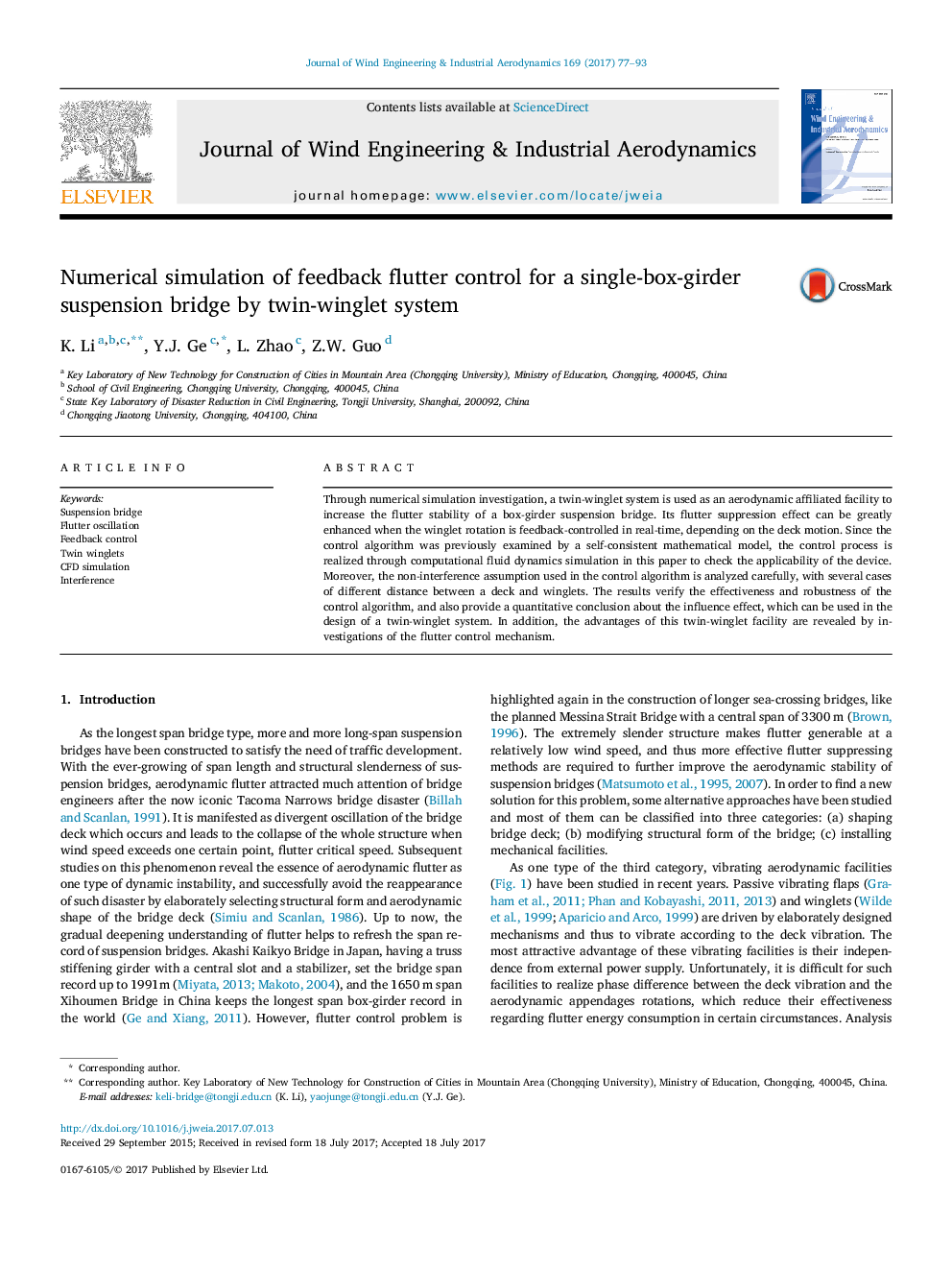| Article ID | Journal | Published Year | Pages | File Type |
|---|---|---|---|---|
| 4924842 | Journal of Wind Engineering and Industrial Aerodynamics | 2017 | 17 Pages |
Abstract
Through numerical simulation investigation, a twin-winglet system is used as an aerodynamic affiliated facility to increase the flutter stability of a box-girder suspension bridge. Its flutter suppression effect can be greatly enhanced when the winglet rotation is feedback-controlled in real-time, depending on the deck motion. Since the control algorithm was previously examined by a self-consistent mathematical model, the control process is realized through computational fluid dynamics simulation in this paper to check the applicability of the device. Moreover, the non-interference assumption used in the control algorithm is analyzed carefully, with several cases of different distance between a deck and winglets. The results verify the effectiveness and robustness of the control algorithm, and also provide a quantitative conclusion about the influence effect, which can be used in the design of a twin-winglet system. In addition, the advantages of this twin-winglet facility are revealed by investigations of the flutter control mechanism.
Related Topics
Physical Sciences and Engineering
Energy
Renewable Energy, Sustainability and the Environment
Authors
K. Li, Y.J. Ge, L. Zhao, Z.W. Guo,
